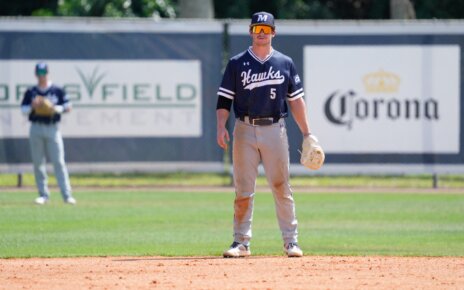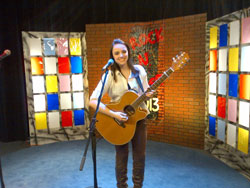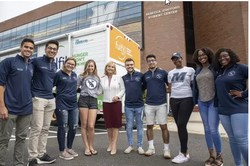Monmouth’s Department of History and Anthropology hosted a small screening of the play, The OK Trenton Project, followed by an open discussion with the director, producer, and some of the leading cast members and contributors.
The screening was a part of the Department’s Seventh Biennial Interdisciplinary Conference on Race, which took place from Thursday, Nov. 3 to Saturday Nov. 5. This year’s collection of virtual programs related to the overarching theme, “Public Spaces, Private Places: Constructing Race and Liberation.”
The play illustrates the artistic effort of a group of Trenton students in 2017; they had created a sculpture entitled “Helping Hands,” which was taken down only four days after installation because the city received anonymous complaints that the piece too closely resembled a gang symbol.
Jonathan Conner, a Trenton-based artist and graduate anthropology student, was brought on as a collaborator for The OK Trenton Project. He introduced the context surrounding this initiative, details about the play, and moderated the conversation between panelists.
He said, “Collective creation is at the root of anthropology and theatre. Both require reflexivity and tell meaningful stories about who we are and why we do what we do…The collaboration of the two offer new and interesting ways to dissect and reflect on current, as well as historical, events.”
“The OK Trenton Project is an excellent case study for theatre as an outlet for ethnic-graphic research…It intends to tell the story of a public art piece— including its misinterpreted meaning and its eventual removal in the form of a documentary style play, told through the words of artists, city officials, students, and city residents,” Conner continued.
According to Conner, the play was a community-based effort in that the information presented in the play reflects true conversations and interactions between the people involved in the sculpture’s story. Some of the play’s actors were directly involved when the situation had first occurred back in 2017.
Conner added, “This sort of performative presentation of research has value and potential in creating dialogues around sensitive topics and a powerful option to present anthropological research.”
Following this contextual debrief of the play, the audience was shown bits of different scenes followed by a dissection of its meaning and purpose by cast members.
Ryanne Domingues, Director of The OK Trenton Project, explained what she learned from her time working on the piece.
“Right before we had started working on the play, I had just moved to Trenton…In a way, this piece was my introduction to the city,” said Domingues. She moved to the city in September 2017, one month after the “Helping Hands” sculpture was removed.
“I learned about Trenton through the interviews we conducted; through the eyes of the community and how they saw things in comparison to what the media portrayed…Truthfully, I was really surprised at the gap between the way Trenton is perceived and what it actually is,” said Domingues.
David Lee White, playwright for The OK Trenton Project, was responsible for taking all of the interview transcriptions and reviewing the actors’ improvisions to create an authentic script.
White also described how violence against the Black community affected the play’s production. He said, “This piece took three years to make because so much happened from the time we started to the time we went on stage. The pandemic, George Floyd— we all remember that period of time. In addition, we had to navigate our own emotions and reactions to everything that was going on, including personal traumas.”
White emphasized that one of the leading actresses, Wendi Smith, was especially vocal during this period, revealing an extra layer of meaning behind the play’s original storyline.
“Wendi’s contributions are peppered throughout the play…There is an awful lot of Wendi-speak,” noted White.
Smith responded, “It was disheartening to hear that, yet again, something had happened to my community. It’s a disregard to who we are.”
“I grew up in Camden and we always heard the expression, ‘nothing good will come from Camden,’ and the same for kids that grew up in Trenton…But that’s not true— we have lives, minds, and people who love us and want to nurture these capacities within us, yet no one wants to give us a chance,” expanded Smith.
Smith related this point back to the play. “Finally, you have this group of children who were finally given that chance to do something great, and it’s just wiped away. How do they feel?” she posed.
Toward the end of the discussion and during the last screening of the play, the audience was able to see the sculpture for the first time. Many members commented on the ambiguity of the artwork, which is opposite from how others initially perceived it and why it was removed in the first place.
The OK Trenton Project was one of many efforts featured throughout the multi-day conference, all of which uncovered the various facets of race— including social mobility, criminalization, effects on the LGBTQ+ community, American slave history, racialized medicine, and violence.




